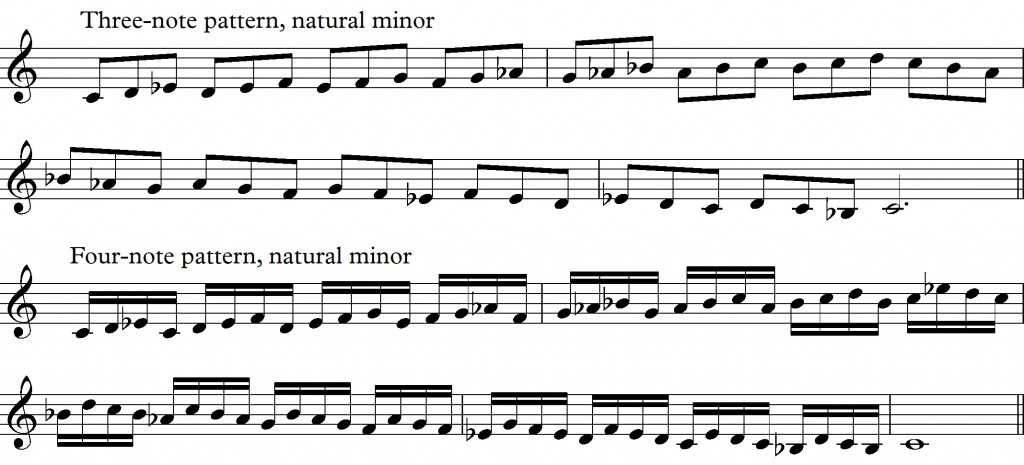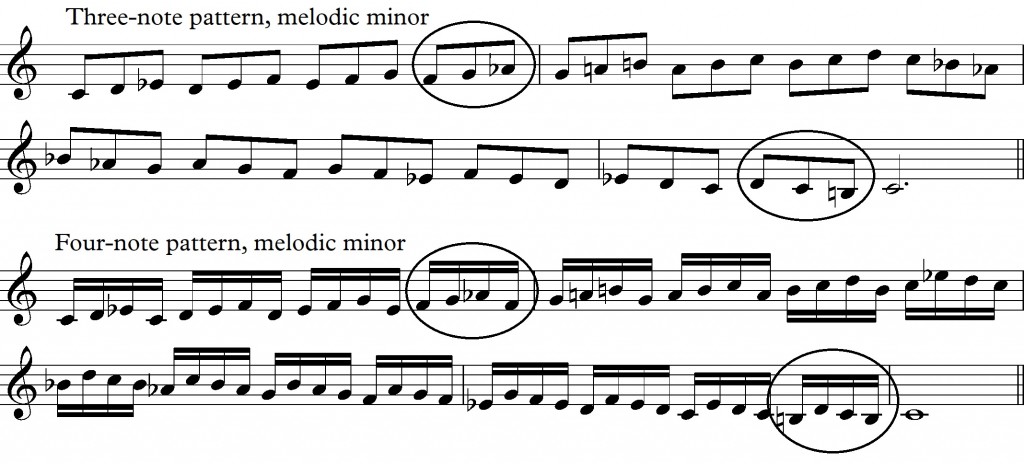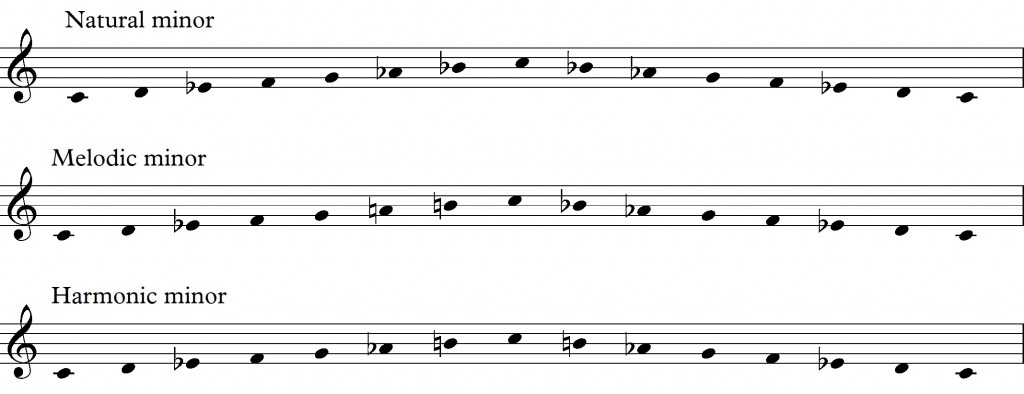This week we’re going to talk about minor – I’m sure you know it’s important, but do you actually practice it? In my case, I never practiced it much for two reasons: first, most exercises and etudes are in major keys; and second, the three minor modes make it confusing to translate exercises to minor. So this week, we’re going to look at a few scale patterns from previous article and show what they might look like in various minor modes.
Let’s take a few seconds to remember our minor scales:
So, recapping our rudimentary theory: C minor has a key signature of three flats, natural minor follows the key signature, melodic minor raises the 6th and 7th on the way up only, and harmonic raises the 7th both ascending and descending. The names (“natural”, “melodic” and “harmonic) are important – they will help us decide which scale to use at a given time and why they’re important.
Let’s start with the “3-note” and “4-note” patterns from week one. Of course, we can play them in natural minor,  the most straight-forward translation:
the most straight-forward translation:
However, these patterns have a little harmony buried in them, and in natural minor we lose the harmonic power of the leading tone. This is not wrong (and it’s definitely still worth practicing), but if we wanted to hear the raised leading tone, we could play it in harmonic minor:
Again, this is an easy “translation” – just replace all the b-flats with b-naturals. However, it’s a little awkward to play. Also, some of the harmonies don’t make a ton of sense. So, while this is a fun way to practice your augmented seconds and challenge yourself, it’s not the most elegant translation to minor.
Finally, we have melodic minor. This is where things get a bit tricky – which notes are “upward” and which are “downward”? In the first half of the scale, I would leave the first measure as-is, and wait until measure two to raise the scale degrees. On the way down, I would raise the seventh during the last beat, since it actually resolves up to the leading tone. Both of these spots are circled in the example below:
So you can see there are multiple ways to practice an exercise in minor. I don’t think any of these is “correct.” Some are easier to remember or execute, and some are melodic while others are more angular. As always, use your ears and be creative.
Happy practicing!



